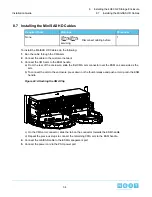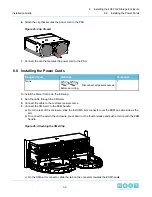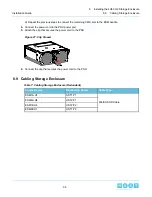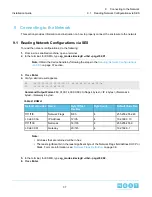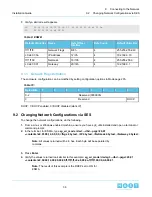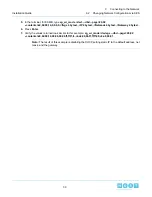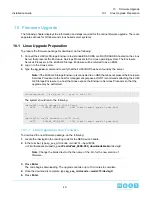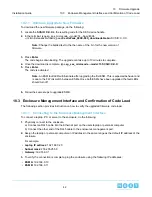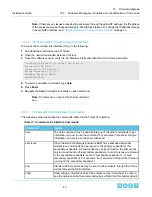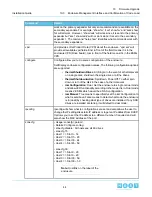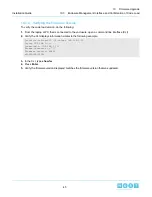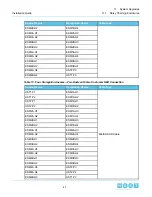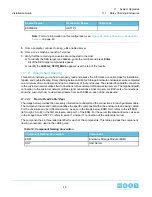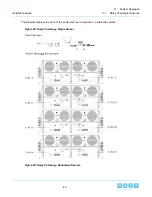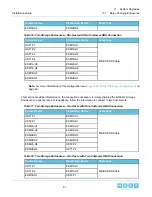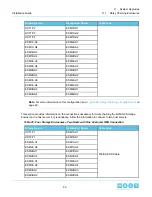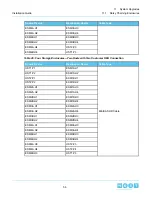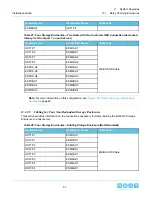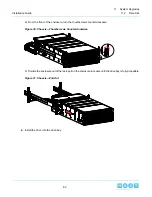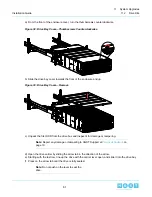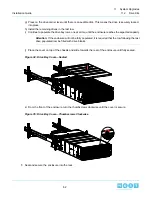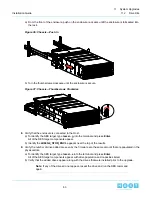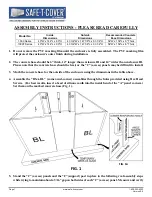
Cable Type
Destination Device
Source Device
HST1.P4
ESM4B.H4
Note: For more information on this configuration, see:
Figure 29: Daisy Chaining—Redundant
on page 49.
5. From a computer, connect to an sg_utils enabled server.
6. From a Linux machine, launch a Terminal.
7. Verify that the remaining enclosures are connected to the Host.
a) To identify the SES target, type lsscsi –g into the terminal and press Enter.
All of the SES target components appear.
b) Identify the 4U60G2_STOR_ENCL appears near the top of the results.
11.1.2
Daisy Chain Cabling
This section instructs you on how to properly read and assess the information on cable maps for installation,
repairs, and troubleshooting. Daisy chaining between 4U60 G2 Storage Enclosure enclosures can be completed
on a minimum of two enclosures and up to a maximum of four enclosures. The standard bandwidth connection
to the customer network utilizes four connections to the customer HBA across two servers. The high bandwidth
connection to the customer network utilizes eight connections across two servers. Both sets of connections
allow the customer host to view data streams from each ESM on each of the enclosures.
11.1.2.1
How to Read Cable Maps
The image below provides the necessary information to understand the connections for each particular cable.
The component name and number identifies the specific component within the enclosure that is being cabled.
For the enclosure and port (Source device), as seen in the image below, ESM1A.H1 refers to the left ESM
(left to right, A to B), in the first enclosure, and port 1 of the ESM. For the server (Destination device), as seen
in the image below, HST1.P1 refers to server 1 and port 1 connection of the datacenter server.
The component has a three letter identifier for each of the components. This table provides the component
naming convention used in the cabling map:
Table 14: Component Naming Convention
Component
Component Naming Convention
Enclosure Storage Module (ESM)
ESM
Host Server
HST
48
11
System Upgrades
Installation Guide
11.1
Daisy Chaining Enclosures

